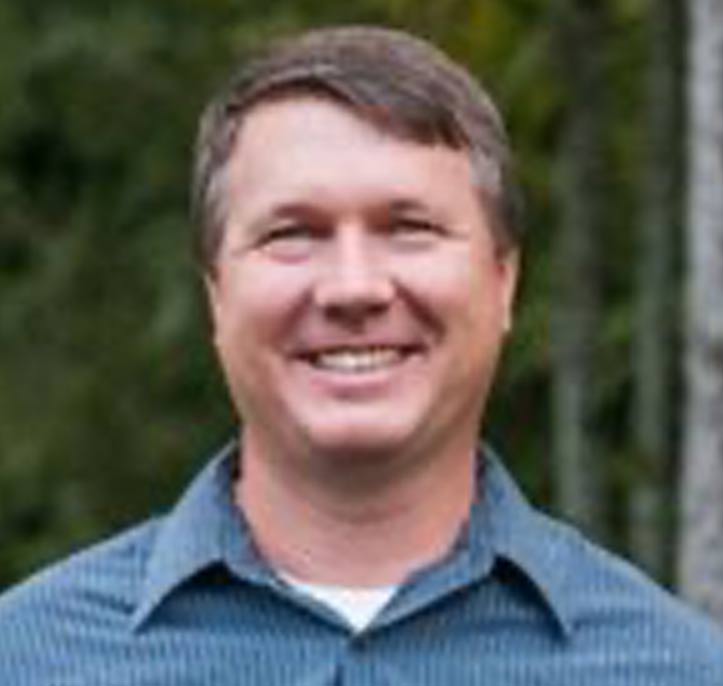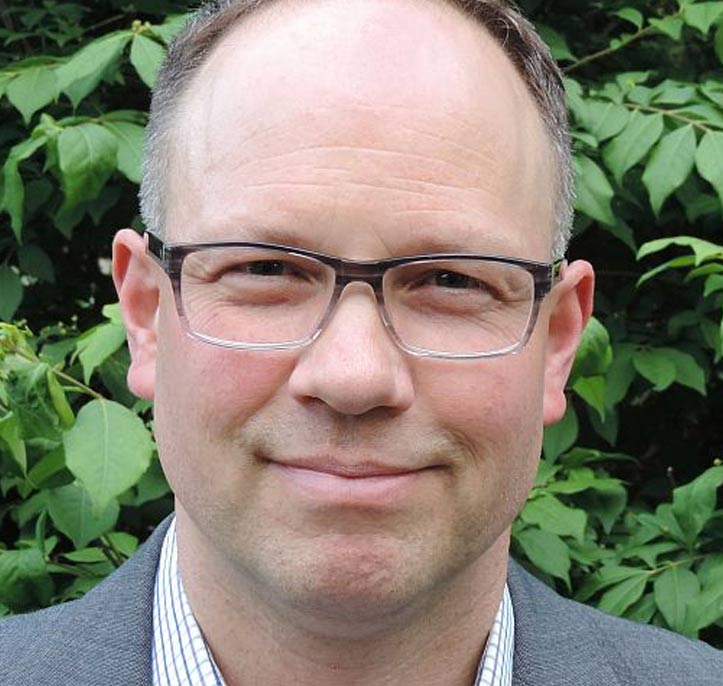2014 SMART Toronto
January 30, 2014
SMART Remediation talks have focused on innovative technologies for remediating contaminated sites, approaches for site characterization, project case studies, regulatory and industry perspectives, and other related topics.

The 11th SMART Remediation conference was held in Toronto on Thursday, January 30th, 2014. Details on the speakers and presentations are provided below.
Speakers

Harry Dahme,
Gowlings
Environmental Legal Framework within Ontario
- Bio |
- Abstract
- | Presentation
Harry Dahme
Harry Dahme is a partner at Gowlings’ Toronto office and leader of the Environmental Law National Practice Group. He has practised exclusively in the area of environmental law since 1984 and has a solid reputation as one of the foremost environmental lawyers in Canada. Harry has been involved in all aspects of environmental law. He regularly advises on environmental risks in corporate transactions. He advises corporations and boards of directors on the development and maintenance of corporate environmental due diligence programs. He provides ongoing regulatory advice to businesses in a wide variety of sectors. He has an active advocacy practice which includes defence to prosecutions, appeals to various tribunals including the Environmental Review Tribunal, and civil litigation with respect to environmental claims.
Environmental Legal Framework within Ontario
Dealing with contaminated sites requires careful consideration not only of the provisions of the Environmental Protection Act, but also careful consideration of the common law and language of the agreements entered into between all of the players, including the consultants and contractors completing the work. We will cover some of the significant new developments in the case law applicable to contaminated sites, including director and officer liability, innocent party liability for remediation orders, and consultant liability. The cases discussed will include Kawartha Lakes, Northstar Aerospace, Smith v. Inco (and a recent Nova Scotia Court of Appeal decision) and some recent cases involving claims against environmental consultants.

Tom Grimminck,
Dillon Consulting Limited
TCE-DNAPL Remediation Using Electrical Resistive Heating at the OMC Canada Site in Peterborough, Ontario
Tom Grimminck
Tom is an Associate with Dillon and has 17 years’ experience as an environmental consultant and environmental contractor in the fields of detailed contaminant delineation, remediation of contaminated sites, implementation of risk management measures, landfill design and construction, and long term monitoring of contaminated sites and/or landfills. His experience includes the design and commissioning of impacted groundwater extraction and treatment systems, environmental planning and implementation of large-scale impacted soil and hazardous soil excavations, capping and encapsulation of contaminant source zones and the in situ treatment of both soil and groundwater impacts. Tom has worked on sites impacted with hydrocarbons (i.e., gasoline, diesel, lubricants), solvents (i.e., degreasing agents, dry cleaning fluids), heavy metals, pesticides, PCBs and wood preservatives (i.e., creosote, coal tar and pentachlorophenol) for a variety of sectors including transportation, real estate, manufacturing, property management and governments throughout Canada and internationally. In addition to being a licensed engineer in Ontario, Tom is registered as a qualified person for environmental site assessments (QPESA) with the Ontario Ministry of the Environment. In 2009, Mr. Grimminck also obtained his LEED AP certification with the Canada Green Building Council. A summary of Tom’s roles and responsibilities includes the development and implementation of risk management plans and remedial action plans to support site development; design and commissioning of soil and groundwater remedial programs (excavations, pump and treat systems, in situ chemical treatments, capping and lining of impacted materials, and hazardous waste management); preparation of specifications and tender packages for environmental rehabilitation projects and evaluation of bids, selection of contractors and contract negotiation; preparation of feasibility and cost studies related to remedial options evaluation; project management and contract management of large remediation projects involving numerous sub-contractors; and preparation of site specific health and safety plans and environmental management plans for environmental remediation sites.
TCE-DNAPL Remediation Using Electrical Resistive Heating at the OMC Canada Site in Peterborough, Ontario
This case study presents the successful remediation of a DNAPL source zone using Electrical Resistive Heating (ERH) at Outboard Marine Corporation of Canada’s (“OMC Canada”) former industrial facility in Peterborough, Ontario. Electrical resistive heating (ERH) is an in situ technology used to heat soil and groundwater coupled with aggressive multi-phase extraction for the remediation of volatile organic compounds (VOC) and DNAPL source zones. At the OMC Canada site, ERH remediation was successful in removing over 2,000 kg of DNAPL and reducing soil and groundwater concentrations of trichloroethylene by greater than 99% from their pre-remediation levels.

Bruce Tunnicliffe,
Vertex Environmental Inc.
Combining Remedial Approaches to Enhance PHC Remediation – Three Case Studies and Lessons Learned
- Bio |
- Abstract
- | Presentation
Bruce Tunnicliffe
Mr. Tunnicliffe is President of Vertex Environmental Inc., and is an Environmental Engineer with years of experience designing and implementing remediation of chlorinated solvents and petroleum hydrocarbons. Having worked on many hundreds of in-situ projects, Mr. Tunnicliffe has extensive experience on innovated assessment tools and in-situ remediation techniques. Mr. Tunnicliffe holds a Master’s degree from the University of Waterloo, has authored many publications, and has presented at numerous conferences.
Combining Remedial Approaches to Enhance PHC Remediation – Three Case Studies and Lessons Learned
Use of In-Situ Chemical Oxidation (ISCO) for subsurface remediation of petroleum hydrocarbons (PHCs) in soil and groundwater is commonly used across North America. ISCO techniques are becoming increasingly recognized and recommended by environmental firms, however, the application of ISCO can be problematic at some sites, in part due to a lack of understanding of how ISCO is incorporated into the larger remedial plan. The purpose of this talk is to present various ISCO techniques available to the North American marketplace, and to explore how these techniques can be applied at sites to maximize the effectiveness of remediation. Three PHC case studies will be presented showcasing application of oxidants to the subsurface using a variety of delivery methods and delivery timeframes. The remedial approach for each site will be presented showing the expectations of each remedial technology, and how ISCO was used to reduce the PHC concentrations to meet remedial goals. Detailed data on each site will be presented including starting PHC concentrations, soil type, remedial goal and timeframe, and ultimately the analytical results at each stage of the remediation project will be presented to show the effect of using (and not using) ISCO. The talk will conclude with general recommendations on how to effectively apply ISCO technologies as part of an overall remedial plan.

Joe Ricker,
EarthCon Consultants, Inc.
Joe Ricker
For more than 24 years, Mr. Ricker has helped clients optimize a wide range of remediation solutions associated with past and present environmental liabilities under various regulatory programs in more than 30 states, as well as multiple remediation sites in Canada and Brazil. He brings a unique perspective to complex interdisciplinary projects and has managed remedial investigation and design projects involving a wide range of chemicals including petroleum hydrocarbons, pesticides, herbicides, wood-treating chemicals, solvents, and PCBs in soils, sediment, groundwater and air. Mr. Ricker is a licensed Professional Engineer in 24 states. He received a B.S. in Civil Engineering from Rose-Hulman Institute of Technology and a M.S. in Civil Engineering from the University of Memphis.
Plume Stability Analysis and LNAPL Removal Benefit Analysis (LRBA)
Evaluating the relative stability of a dissolved groundwater contaminant plume is generating increasing attention as many state regulatory agencies, EPA and private stakeholders are realizing the applicability of plume stability as part of the environmental evaluation and/or remedial planning process of a site. Specifically, a plume stability evaluation will allow the stakeholder to assess whether a contaminant plume is stable, decreasing or increasing in size. Assessing the stability of a plume will allow the stakeholder to evaluate whether additional remedial action is necessary or whether risk-based closure of a site may be applicable or whether natural attenuation is occurring at a site. There are many other ancillary applications of plume stability evaluations as related to groundwater contamination. This session presents the Ricker Method® for plume stability analysis, which entails the use of innovative techniques to calculate and assess historical trends in contaminant plume area, average concentration, contaminant mass, and center of mass. This session will also present certain aspects of a proprietary analytical tool called LNAPL Removal Benefit Analysis (LRBA). LRBA is useful for evaluating the relative benefit of removing LNAPL from a site that has LNAPL and a related dissolved phase groundwater plume. LRBA involves the evaluation of up to eight metrics listed below. The metrics to be evaluated include: 1) evaluation of dissolved plume stability using the Ricker Method® plume stability analysis, 2) evaluation of potential asymptotic LNAPL recovery curve, 3) evaluation of relative cost trend, 4) evaluation of cost-benefit indicator of cost per unit volume of LNAPL removed, 5) evaluation of relative sustainability, 6) evaluation of LNAPL transmissivity, 7) evaluation of a comparison of the relative LNAPL center of mass movement compared to the dissolved plume center of mass movement, and 8) evaluation of the estimate of LNAPL mass loss through the measurement of CO2 off-gassing when applicable (i.e., natural source zone depletion, or NSZD). The outcome of the LRBA will guide the stakeholder in making the decision as to whether it makes sense to remove LNAPL from a site that has LNAPL and a related dissolved phase groundwater plume. The Ricker Method® for plume stability analysis was published in Groundwater Monitoring & Remediation (28, no. 4/ Fall 2008/pages 85–94) and has been used at numerous contaminated sites to effectively demonstrate the stability of contaminant plumes comprised of chlorinated solvents, carbon tetrachloride, pentachlorophenol (PCP), creosote, naphthalene, benzene, nickel and sodium, among others.

Jean Paré,
Chemco inc.
Common Mistakes to Avoid when Treating Soil and Groundwater In-Situ
- Bio |
- Abstract
- | Presentation
Jean Paré
Jean Pare, P.Eng., has a degree in Chemical Engineering from Laval University. He has been involved for the last 22 years in the evaluation, development, design, and promotion of both conventional and innovative environmental technologies. As Vice President with Chemco Inc., his responsibilities include the remediation design, technico-economical analysis and technology supply for chemical oxidation and reduction, soil washing, and enhanced bio-remediation. Last year, he worked with over 400 sites applying his expertise to various types of organic and inorganic contaminants in soil and groundwater. He is also involved with many environmental organizations such as CLRA, CBN, ESAA, BCEIA and Reseau-Environnement where he is an active technical committee member and regular technical speaker.
Common Mistakes to Avoid when Treating Soil and Groundwater In-Situ
When properly designed and implemented, on-site treatment of soil and groundwater can save landowners significant costs while avoiding a disruptive dig and haul option. In Situ treatments are also powerful tools when coupled with Site Specific Risk Assessments (SSRA). Focused on-site treatments can readily reduce contaminants to levels which satisfy the requirements stipulated by a SSRA. Over the last two decades the field of In Situ Chemical and Biological remediation has evolved, significantly banking on vast efforts in research and development, laboratory testing, innovative delivery and monitoring techniques, sound pilot scale design and implementation, and experience in implementing full scale remediation projects. As a result, there is now a large array of technologies at the disposal of today’s Environmental Consultants and Contractors. These technologies enable practitioners to reach remediation objectives when used as stand-alone technologies or coupled with others. However, the technologies must be used properly to be effective. If their limitations are not fully understood, they are likely to be misused, resulting in disappointing results. This talk outlines some of the most common pitfalls encountered by practitioners of the art and science of In Situ Chemical and Biological treatment technologies. This review is intended to identify some of the major considerations in screening, selecting, designing, implementing, and monitoring a full scale treatment project.

Phil Dennis,
SiREM
Optimizing In-Situ Bioremediation of Chlorinated Ethenes in Ontario’s Groundwater
- Bio |
- Abstract
- | Presentation
Phil Dennis
Phil Dennis has over 25 years of experience working in the fields of molecular biology, microbiology and environmental remediation with a focus on microorganisms that help to clean up our groundwater. Phil holds a Masters of Applied Science in Civil Engineering from the University of Toronto and an Honors B.Sc. in Molecular Biology and Genetics from the University of Guelph. Phil is a founding member of SiREM, an industry leader in bioaugmentation and remediation testing, where as a Senior Manager he focuses on research and development, and management of molecular genetic testing services.
Optimizing In-Situ Bioremediation of Chlorinated Ethenes in Ontario’s Groundwater
Cleanup of perchloroethene (PCE) and trichloroethene (TCE) in groundwater through enhanced in situ bioremediation (EISB) includes the addition of electron donors (biostimulation) and the addition of beneficial dechlorinating microorganisms (bioaugmentation). EISB is a proven and cost effective remedial approach which is now being widely implemented at Canadian chlorinated solvent sites due to: The availability of bioaugmentation cultures and related testing; Federal and provincial regulatory approvals for bioaugmentation culture; Demonstrated success of bioremediation at Canadian sites; and Novel approaches for amendment distribution in low permeability matrices. A Canadian bioaugmentation culture (KB-1®) containing Dehalococcoides (Dhc) can be used to enhance bioremediation at sites where these dechlorinating microorganisms are absent or poorly distributed. In addition, locally available remediation treatability studies and groundwater testing for Dhc, allows better selection of remediation amendments and strategies to confirm success after implementation. The KB-1® culture has been available for use in Canada since 2008 upon receiving regulatory approvals obtained through Environment Canada’s New Substances Notification program. The Ontario Ministry of the Environment (MOE) also granted approval for KB-1® through a Mobile Certificate of Approval, which is applicable to most sites in Ontario. As a result, KB-1® is being applied at a growing number of locations in Ontario, including sites in the Greater Toronto Area and Ottawa regions. A case study highlighting an Ontario site will be presented to illustrate how successful enhanced bioremediation was implemented. Geologies where EISB is being implemented include fractured rock as well as low permeability clay and glacial till. Low permeability strata are common in some of the most highly industrialized areas in Canada, notably in Southern Ontario and Quebec. Originally conceived as an oil and gas extraction technology, hydraulic fracturing can be used to improve distribution of bioremediation amendments, thereby improving bioremediation outcomes. Electrokinetic (EK) bioremediation is a novel approach that uses an electrical current to move amendments in the subsurface. Examples of successful implementation of hydraulic fracturing and EK- enhanced bioremediation to improve amendment distribution in clay strata will be discussed.